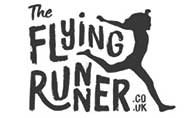Menu
I've set out below extracts on injury management and avoidance from my book.
Bear in mind that ‘overuse’ is a deliberately generic word that in running injury terms can simply mean ‘too much’ in the widest sense. Too much mileage per se, of course, but it can also include any of the following causes:-
- too much running on pavement or tarmac
- too much running in inadequate shoes
- too rapid an increase in the volume of training
- too rapid an increase in the intensity of training, even if the volume has stayed the same
- too sudden a change in the training regime, whether related to the running and/or non-running elements of the training programme
- too much uphill or downhill running
- too much running on an uneven road camber
- too much training on an inadequately nourished or dehydrated body
- too much training on a sleep-deprived body
- too much running for the body’s particular state of biomechanics
That’s a lot of factors so it’s no wonder that so many runners suffer some sort of injury at some point. It does however back up the overarching philosophy of making training progress gradually rather than suddenly.
Working with medical advice
If we exclude degenerative conditions such as advanced osteoarthritis, and trauma injuries which may permanently damage your musculo-skeletal structure, then there really should be very very few injuries that are somehow ‘caused’ by running that should need to end your running career. You may need to do extensive rehab exercises; you may eventually need to consider the benefits from minor surgery; you may need to be very careful about surfaces; very long distances; frequency of running; or footwear but one way or another there should be a source of treatment that keeps you as a regular endurance runner.
The word ‘conditioning’ has just as wide a coverage and for distance running we can maybe think of it in modern management speak as meaning’ fit for purpose’. There are elite runners whose marathon preparation may include up to 130 miles weekly on the roads and if they can sustain this without any of the above factors taking a toll then one way or another they have become adequately conditioned to do so.
The runner’s perception of the quality of their medical adviser is key in the recovery process, and is linked to their diligence in following the recommended rehab programme. So, just as with your running, do set some goals and structure to your non-running recovery process. If your practitioner is as committed to eliminating and preventing the injury’s recurrence as you are likely to be, there may be a regular and precise set of exercises and drills that you are advised to do. Two or three sessions per day is not uncommon from sports medicine specialists, maybe spending up to forty or fifty minutes daily building up the conditioning needed to reduce the prospects of the injury recurring. This has the added benefit that mentally you will still have that structure and commitment to a training plan, albeit it won’t involve belting round your most scenic training routes.
When you decide that an injury does need some medical diagnosis and advice, take a pen and paper to your first appointment (which may be your only appointment if you are lucky) and ask your specialist all of the following, and note down and act upon the replies:-
- What caused the injury?
- What exactly should I do to prevent the injury recurring?
- How often should I do the rehab exercises and how long should I continue to do them for
- How long should I cease running for?
- When I start running, how should I build up the running duration and frequency?
- What cross training options can I pursue in the meantime?
- Can I do these cross training options with the same intensity as my running?
Your practitioner may not be able to provide all these answers, but it’s definitely worth asking. Bear in mind that the healing process may vary in duration and that a second or in some case third appointment may also be recommended. It’s an annoying scenario for any runner to be in – not only are you unable to run, but you are incurring extra expense in doing so and probably spending what would be training or leisure time in travelling to appointments and doing the recommended rehab. Do follow the rehab advise precisely as recommended, however time consuming and boring it may be. If you don’t, you are more likely to be making recurring visits if the injury recurs.
There is a major link between the conditioning of a runner; their biomechanics and their incidence of injury. So if you find that you increase your average mileage from say 30 to 40 over two months and become injured in doing so, on one hand it may well be that the increased mileage partly caused the injury. On the other hand, don’t take this to mean that you will repeatedly become injured when you run 40 miles weekly. It should be a matter of increasing the strength/strength endurance qualities of whatever caused the injury (quite often more than one factor is involved) so that you can in future withstand a higher training load, if that is how you wish to progress.
The often quoted guideline of avoiding mileage increases of more than 10% per week has its general uses but it doesn’t acknowledge that each runner will have an injury threshold, which will vary as their robustness increases or decreases, so if you are having recurring injuries keep a tab on how your mileage has evolved and look for indicators of what may be your cut off point.

